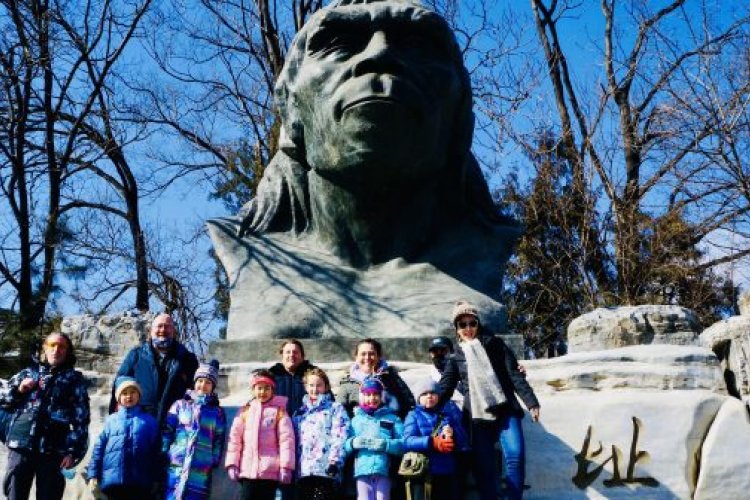Peking Man: The Butterfly Effect
The driver heading west rushes through a yellow light and comes to a stop in the middle of the four-way intersection. He’s now blocking the way north.
Other drivers curse him with their horns but he can’t move because he’s last in a line of cars stuck in the intersection.
The road west is blocked by some unseen force so the motorcade idles in the middle of the road, blocking traffic going north and south.
The light turns and now the cars going north and south inch forward to the conga line of stopped cars. They inch closer and closer as if a wormhole might open and spit them out on the other side.
The symphony of car horns, accented by staccato bursts from a baritone bus, crescendos into a formless din.
The cars going north and south almost touch the cars going west.
The lights change again and more vehicles join in. The ones going east rush into the intersection until they bump up against the cars trying to go north that are stuck in the intersection because of the cars going west.
More cars going west pour in until they meet the cars stuck trying to go south. The way west loosens up and the cars originally blocking the intersection exit.
But instead of letting the next batch of cars through, the ones going south rush forward, closing the gap, even though they’ve got a red light. They are stopped by the cars going east that are still trapped by the cars going north. The cars going north are still trapped by the cars going west. And the cars going west are now trapped by the cars going south.
The situation has turned into a real-life M.C. Escher drawing.
If the cars going west hadn’t initially blocked the intersection, this wouldn’t have happened. Had the cars going north and south not rushed in and just waited one cycle for the intersection to clear, this wouldn’t have happened. Had the cars going east not rushed in to be blocked by the cars going north, this wouldn’t have happened. And had the cars going west not rushed in only to be blocked by the cars going south, well, you get the idea.
The lights flip through another cycle. It’s been nearly six minutes. I look north and the side of the street going south is backed up as far as I can see.
I now wonder how much time has been wasted collectively. The people who have been waiting since the beginning have lost six minutes of their lives. But then, like a tornado dissipating, the knot frees up as quickly as it formed. The cars going south stop creeping forward and make room for the cars going west. The cars going west carefully squeeze through single file. Other cars going west refrain from entering the intersection. The cars in the intersection going north are now clear. They move forward and the rest of the cars going north stay behind the white line. The cars going east now take their turn. The cars going south do the same.
Like a trick knot, the tangle collapses. For the first time in seven minutes, the intersection is clear.
The lights change and the cars going north and south rush through. My bus comes. It’s full of people who have been delayed seven minutes from doing whatever it is they are out to do.
As I get on the bus, I think about that original driver. Where is he now? Does he know the chaos that he set in
motion? Does he care?
The more I think about it, the more absurd it is. The driver – the prime mover – might be the only one in this story who got where he was going on time.
Click here to see the July issue of the Beijinger in full.
Photo: George Ding
Related stories :
Comments
New comments are displayed first.Comments
![]() tinalili
Submitted by Guest on Wed, 07/10/2013 - 10:21 Permalink
tinalili
Submitted by Guest on Wed, 07/10/2013 - 10:21 Permalink
Re: Peking Man: The Butterfly Effect
oh my god,
Validate your mobile phone number to post comments.

